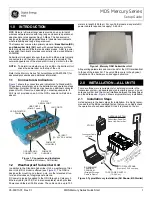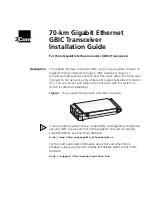
How QuickConnect
™
Works
• When the receiver voltage drops below 3.5 volts the system drops out (ceases to operate).
• When power is restored the receiver immediately attempts to reconnect.
• If the transmitter was left on, the system reconnects typically in about 4/100 of a second.
QuickConnect is designed to allow you to fly safely through most short duration power interruptions,
however, the root cause of these interruptions must be corrected before the next flight to prevent a
crash.
Note:
If a brownout occurs in flight it is vital that the cause of the brownout be determined and
corrected.
Flight Log (SPM9540 Optional)
The Flight Log is compatible with the AR6210. The Flight Log displays overall RF link
performance as well as the individual internal and external receiver link data. Additionally
it displays receiver voltage.
Using the Flight Log
After a flight and before turning off the receiver or transmitter, plug the Flight Log into the BIND/DATA
port on the AR6210. The screen will automatically display voltage e.g. 6v2= 6.2 volts.
Note: When the voltage reaches 4.8 volts or less, the screen will flash indicating low voltage.
Press the button to display the following information:
A - Antenna fades on the internal antenna
B - Antenna fades on the external antenna
L - Not used
R - Not used
F - Frame loss
H - Holds
Antenna fades
—represents the loss of a bit of information on that specific antenna.
Typically it’s normal to have as many as 50 to 100 antenna fades during a flight. If any single
antenna experiences over 500 fades in a single flight, the antenna should be repositioned in the
aircraft to optimize the RF link.
Frame loss
—represents simultaneous antenna fades on all attached receivers. If the RF link
is performing optimally, frame losses per flight should be less than 20. A hold occurs when 45
consecutive frame losses occur. This takes about one second. If a hold occurs during a flight, it’s
important to evaluate the system, moving the antennas to different locations and/or checking to
be sure the transmitter and receivers are all working correctly.
Note:
A servo extension can be used to allow the Flight Log to be plugged in more
conveniently. On some models, the Flight Log can be plugged in, attached and left on
the model using double-sided tape. Mounting the Flight Log conveniently to the side
frame is common with helicopters.
Tips on Using Spektrum 2.4GHz
ModelMatch
™
Some Spektrum and JR transmitters offer a patent pending feature called ModelMatch. ModelMatch
prevents the possibility of operating a model using the wrong model memory, potentially preventing a
crash. With ModelMatch each model memory has its own unique code (GUID) and during the binding
process the code is programmed into the receiver. Later, when the system is turned on, the receiver
will only connect to the transmitter if the corresponding model memory is programmed on screen.
Note
: If at any time you turn on the system and it fails to connect, check to be sure the correct
model memory is selected in the transmitter. Please note that the DX5e and Aircraft Modules do
not have ModelMatch.
While your DSM equipped 2.4GHz system is intuitive to operate, functioning nearly identically to
72MHz systems, following are a few common questions from customers.
1. Q: Which do I turn on first, the transmitter or the receiver?
A:
If the receiver is turned on first
—all servos except for the throttle will be driven to their preset
failsafe positions set during binding. At this time the throttle channel doesn’t output a pulse
EN
























